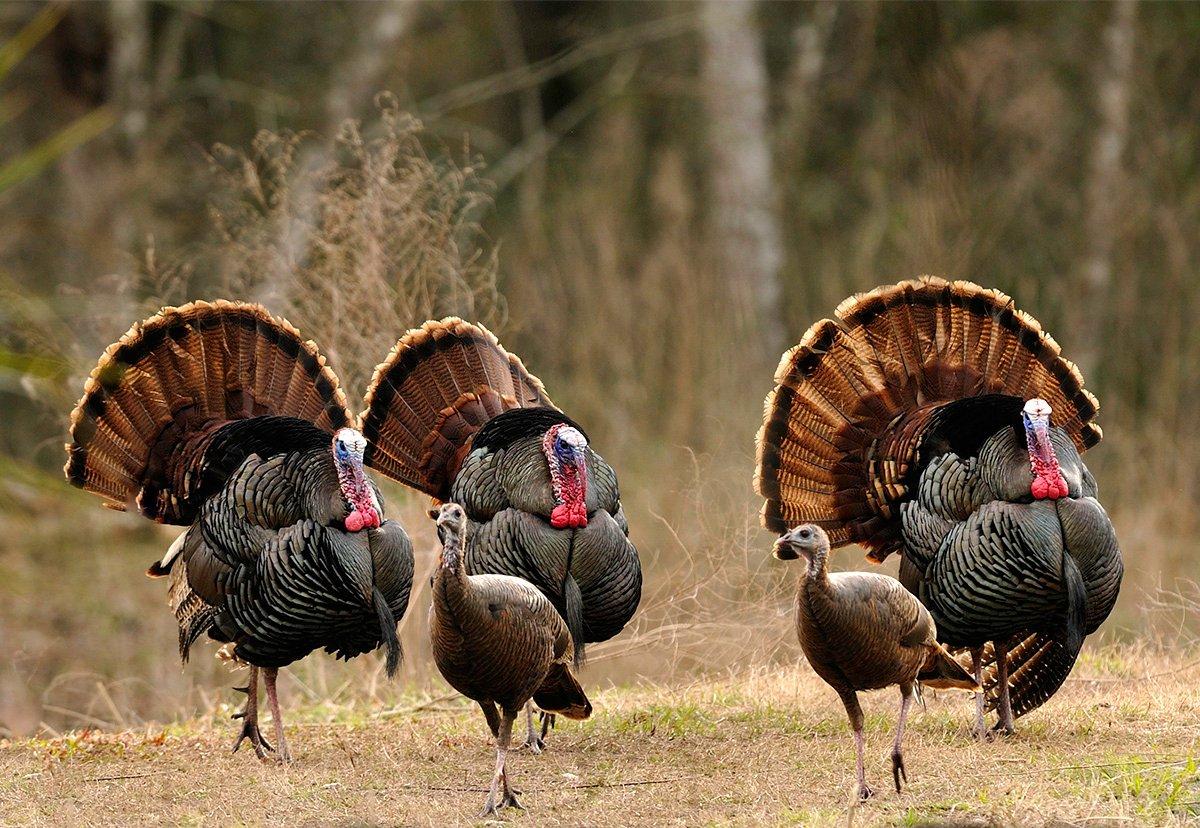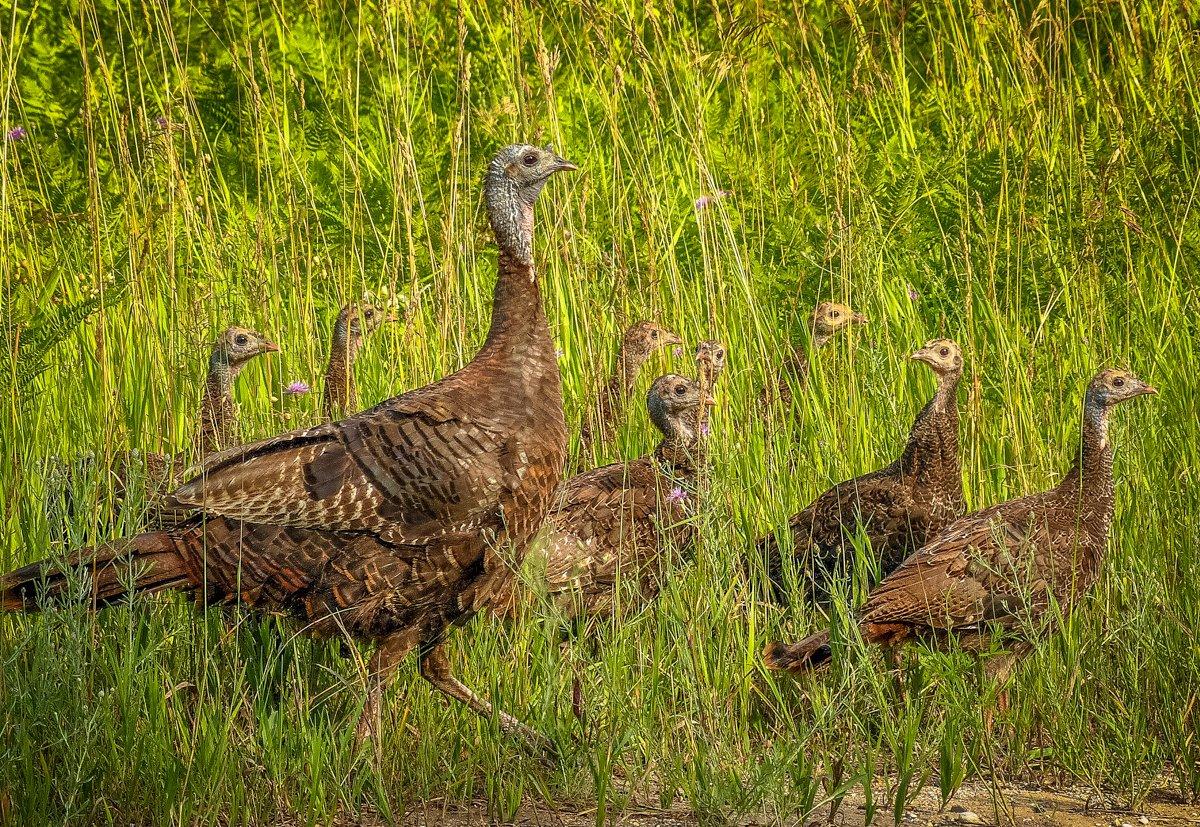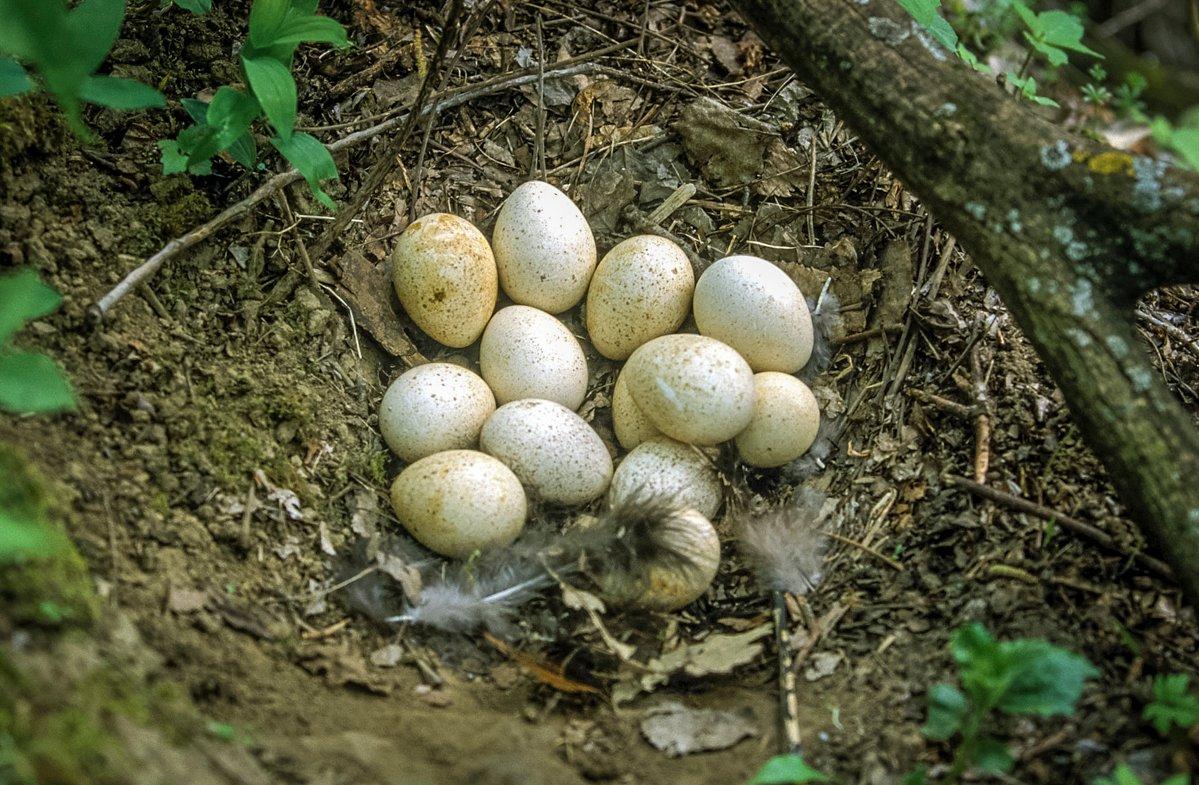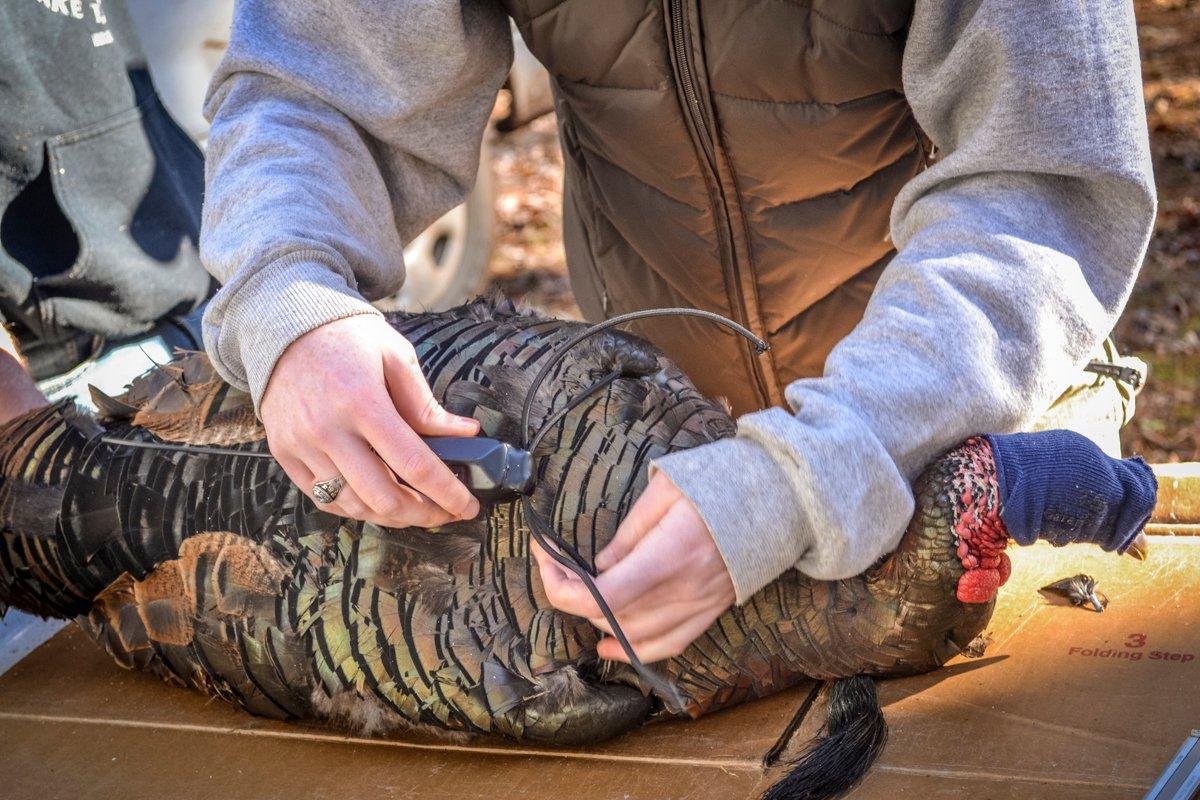When it comes to thriving turkey populations, the timing of the gobbler harvest could be just as important as the number of birds taken
It's no secret that turkey numbers are down, particularly in parts of the Southeast and Midwest. Lack of habitat, poor nesting conditions, predator impacts and disease have all gotten a portion of the blame for declining turkey numbers.
But is it time that we, as hunters and conservationists, ask if things we're doing could be part of the problem, too?
Mark Hatfield, director of conservation administration at the National Wild Turkey Federation, says the organization classifies wild turkey population status as existing in one of three stages: Increasing, Stable, or Declining. When we see regional populations either stable or declining, it causes concern, Hatfield says. Overall numbers nationwide may look stable, but turkey populations in parts of the Northeast and upper Midwest are still increasing, rapidly in some areas, and that is masking the decline we are seeing in other areas. In general terms, we are seeing either stable or declining populations in much of the lower Midwest and Southeast.
While all the factors mentioned above likely play a role in declining turkey numbers, they don't answer the entire question as to why turkey numbers are falling in some areas but are stable or rising in others.
In just about all the areas with declining numbers, we are seeing a drop in the recruitment ratio of poults, Hatfield says. In other words, we are seeing a drop in the number of poults each year that actually enter the turkey population.
Many states with declining populations have something in common: an early start to the hunting season.
The Exploded Lek
Turkey hunters live for the gobble. We want our seasons to cover as much of the breeding period, and as much of the peak gobbling activity, as possible. Over the past several decades, increasing turkey populations have afforded state wildlife agencies the option of stretching seasons and bag limits. Earlier starting dates meant more time to chase gobbling turkeys, and that made hunters happy. But are those early openers negatively impacting poult recruitment?
For most states, spring gobbler harvest goals have long been determined largely by Dr. Bill Healy's recommendations, based on research conducted in the 1980s and 1990s, that stated that up to 30% of the adult male population in a given range could be harvested each season without negatively impacting breeding and overall population numbers. Stay at 30% or under, and your population will continue to grow.
But new research by several turkey biologists, including Mary Jo Casalena, wild turkey biologist for the Pennsylvania Game Commission, and Dr. Mike Chamberlain, professor at the Warnell School of Forestry and Natural Resources at the University of Georgia, points to the possibility that when we harvest those male birds might be as, or even more, important than how many we harvest.
For years, it was assumed that the bulk of the hens in a given area would breed in a compact window of time fairly early in the spring, go on nest about the same time, and hatch their poults in a similar time frame, Chamberlain says. That's how it should be. Laying and hatching the bulk of the poults together provides high population densities which reduces the overall impact of predators on the species, known as predator swamping, and it hatches the poults during a time when both food and cover are at their peak.
In recent years, though, new GPS technology has provided more accurate ways to track hens over the course of an entire breeding season. With the new GPS systems, we started to notice hens on nest later and later in the season, Chamberlain continues. At first we thought that maybe we'd just missed these late-nesting hens in earlier research. We soon realized that we hadn't missed the late nesting, but that turkey behavior was changing. Hens were mating later in the breeding cycle and nesting and re-nesting sometimes several times before they hatched poults.
Why were turkeys behaving differently? Chamberlain thinks early season hunting pressure might be the answer. Turkeys mate in a system known as an exploded lek, wherein all the males of a given population congregate in one area to display and compete for the breeding rights to most of the females in the area. It's actually similar to a prairie chicken lek, but spread out over a much larger area.
A small group of male turkeys will spend winter through early spring together, Chamberlain says. They compete constantly for pecking order among the group, with the dominant tom eventually doing the majority of the breeding.
Once breeding starts, hens spend time with these groups of males, sometimes even traveling from group to group to choose the dominant males in each to mate with. The hens store the sperm from these toms until they are ready to nest, then release it all at once to fertilize the eggs. This means that the strongest sperm from the strongest toms fertilize the eggs, giving the offspring the greatest chance of survival, Chamberlain says.
"When the dominant bird in an area gets killed before the breeding occurs, it can cause problems with the entire breeding cycle." — Dr. Mike Chamberlain
When the dominant bird in an area gets killed before the breeding occurs, it can cause problems with the entire breeding cycle. For turkeys, the hen doesn't automatically go breed the next most dominant male in line, Chamberlain says. The entire process starts over. The males compete again for dominance, and once the new dominant male is chosen, the hens start the choosing process all over. This pushes breeding back by weeks, or even longer.
Chamberlain went on to add, It isn't just the toms who are competing with each other for breeding rights. Hens have a pecking order as well, with the dominant hen breeding first, followed by the next in line and so on until all the hens in an area are bred. When that dominant hen's breeding is pushed back, that next hen in line waits longer as well. That means some of the more subordinate hens might not be getting bred until very late in the spring or early summer.
Unintended Consequences
It isn't just the toms that see a negative impact from early season start dates. Casalena says early openers put pressure on the hen population as well.
To start with, early seasons put hunters in the woods at the times when hens are actively traveling in search of breeding toms, Casalena says. Our research shows that hen harvest, either accidental or legal (in states where bearded hen harvest is allowed), is much higher in states with earlier seasons than in states with start dates that coincide with hens going on nest. For example, Pennsylvania has a much later starting date than Virginia. Hen harvest in Virginia can be as high as 6% of the total kill, while PA hen harvest is down around 1.4%.
Harvest aside, early seasons put pressure on nesting hens. When hens get pushed off nests by hunters in the area, many of those first nests will be lost, she says. Yes, the hens will probably re-nest, but first nesting is the most important. Second, or third or fourth nesting attempts, usually end in smaller clutches and fewer hatched poults. These nests also have a lower chance of long-term survival.
I've seen the results. A decade ago, while bowhunting in September, I would see mixed flocks of hens and nearly mature poults of the year, and it was hard to distinguish between them. Without fail, I now see hens each fall with poults that are barely bigger than quail. It doesn't take a biology degree to know those tiny birds are going to have a hard time surviving predators and weather conditions through the fall and upcoming winter.
So, When Should We Hunt?
How soon should turkey seasons open? It's a balance. For the best overall production numbers, Chamberlain says the most conservative starting dates would wait until peak incubation starts for the area. That means not hunting until the vast majority of hens in an area are sitting on nests.
A less conservative option would be to start seasons about the time hens are starting to lay eggs. By this time, most of the hens have bred several times and the eggs will be fertilized.
State game departments are charged with balancing the health of the flock with the desire of their state's turkey hunters to start the season as early as possible. Early turkey seasons are a big draw, and state game agencies depend on license sales for operating capital. In the past decade, many of those agencies have gone with earlier and earlier start dates, sticking with the old theory that, as long as the total harvest of spring male birds stayed close to 30%, turkey populations will remain strong. It is worth noting, says Chamberlain, that many wildlife agencies have only recently started tracking total harvest rates. While it has been assumed that harvest rates of 30% were OK, many states didn't have accurate harvest data to see if their total harvest actually fell in that range.
While later seasons might mean tougher hunting conditions due to thicker cover and less overall bird movement, Chamberlain points out that late-season gobbling can actually exceed that of early season.
Early or late, many hunters are reporting less gobbling throughout the season now than they were hearing just 10 to 15 years ago, even in areas with strong turkey populations. Chamberlain says that trend might also be caused by early season start dates. When vocal toms are being killed early, it is likely that at least some of these toms are the dominant birds. Our research shows that the remaining toms also reduce gobbling in response to the dominant bird being gone, and to hunting pressure.
Dialing Back
Some state agencies are taking notice, and reconsidering their season structure. I've been asked by multiple agencies over the past few years about this, Chamberlain says. At least some are considering later seasons that are better timed relative to nesting efforts. This season, Alabama is experimenting with later dates on several state-owned WMAs. The Arkansas Game and Fish Commission is strongly considering moving the 2021 season start date back by a week. Chamberlain suspects that several other states may also consider changes in the coming years.
Do I, as a turkey hunter, want to see later season start dates? Not really. Like you, I start planning turkey hunting trips to get out as early as possible each spring to enjoy the sport I love. At the same time, I know turkey populations in certain areas are hurting right now. And I'm going to try to do everything in my power to help them out. If putting off my season a week or two helps a few more poults make it to maturity and better gobbling action in the future, I'm all for it.
More Realtree turkey hunting.











